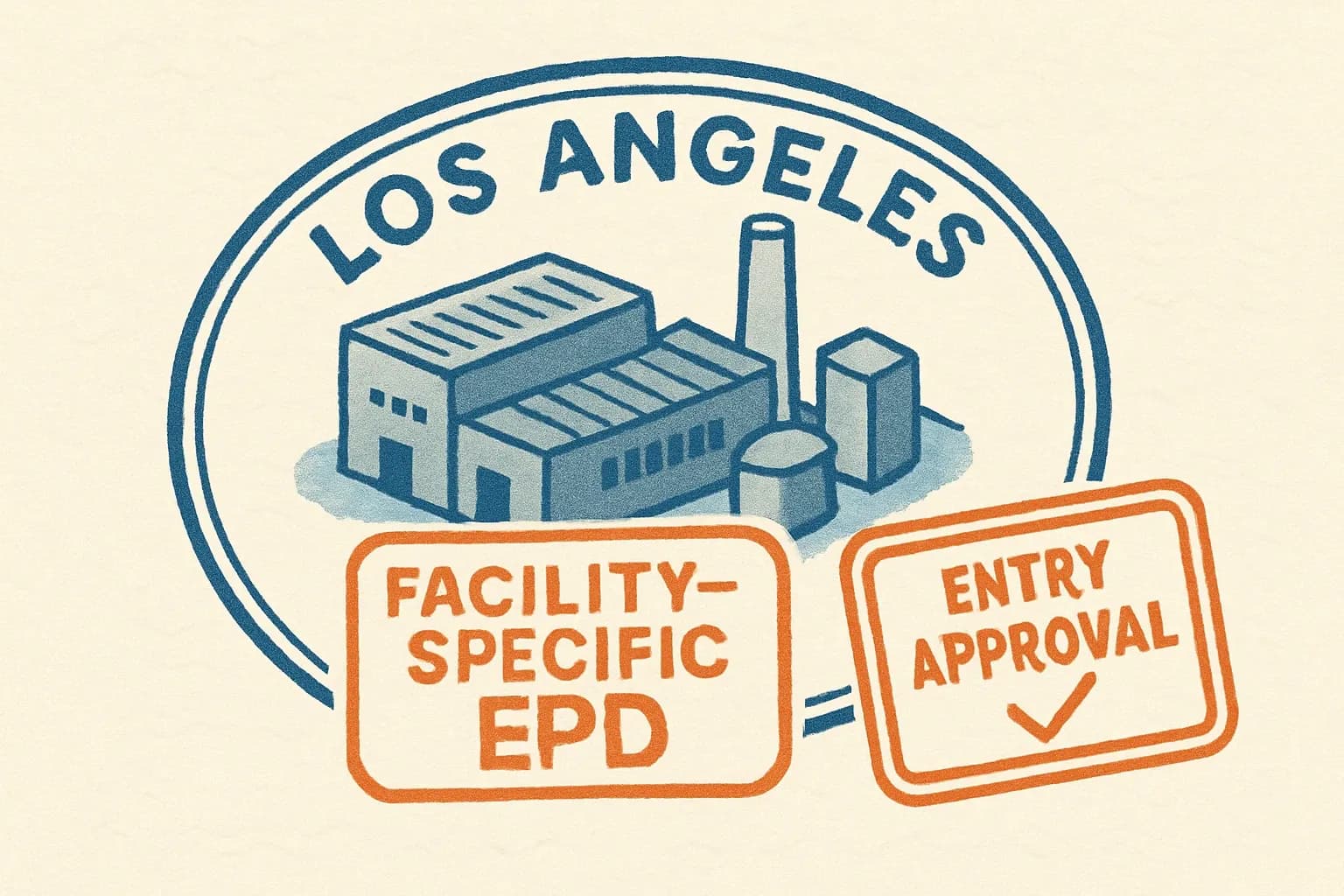L.A. Green Building Code: Embodied Carbon Rules You Can’t Ignore
Los Angeles just strapped a booster pack onto California’s already-tough CALGreen code. Starting July 1 2024, big projects must cap the global-warming potential of concrete, with steel and glass right behind. If your product ships without a bullet-proof, facility-specific EPD, specifiers may swipe left.


From CALGreen to LAGBC 2.0
The Los Angeles Green Building Code (LAGBC) rides on the statewide CALGreen foundation but layers on stricter local amendments. A 2024 City Council motion directs regulators to lock embodied-carbon limits into the code for buildings over 50 000 ft², aiming for a 50 % cut by 2030 (City of LA, 2024).
Three Pathways, Zero Excuses
Projects can comply by:
- Re-using at least 45 % of an existing structure.
- Proving a 10 % whole-building life-cycle reduction versus a modeled baseline.
- Meeting product-specific GWP caps drawn from Buy Clean and regional averages.
All three rely on transparent, verifiable LCA data.
Facility-Specific EPDs or Bust
The code bans industry-average declarations; only plant-level EPDs independently verified under ISO 14025 make the grade (DGS FAQ, 2025). Older documents get kicked if they age past five years or the underlying PCR expires.
Concrete Takes Center Stage
Mandatory CALGreen limits apply to non-residential projects over 100 000 ft² as of July 1 2024. For a 5000 psi mix, the max cradle-to-gate GWP sits at roughly 465 kg CO₂e/m³—about 15 % below the current Southern California average (CalCIMA, 2024). Miss the target and inspectors can halt pours on site.
Steel, Glass, Insulation: Next Dominoes
Los Angeles already follows Buy Clean caps for public works. Starting January 1 2025, hot-rolled sections must land under 1 010 kg CO₂e per tonne, with similar ceilings for rebar and flat glass (DGS, 2025). Expect the city to mirror or beat those limits in private-sector permitting.
Who’s in the Crosshairs
• New offices, retail, and warehouses ≥50 000 ft².
• School projects ≥50 000 ft².
• Major additions doubling an existing building’s area.
Housing and healthcare stay exempt—for now.
Data Tripwires That Stall Permits
EPDs missing batch energy, water, or fuel splits get bounced back. GWP figures must state the reference PCR clearly. And don’t forget typo-free plant addresses; reviewers have rejected submittals over that tiny slip!
ROI: Compliance That Sells
Spec teams tell us a compliant EPD can shave two weeks off bid review and adds up to 8 % win-rate lift on CALGreen-flagged projects (internal survey, 2025). Compared with those numbers, the paperwork bill feels like pocket lint.
The Takeaway
Los Angeles is turning embodied carbon from a buzzword into a permit checkbox. Plant-level EPDs, collected fast and kept current, are the simplest way to stay in the game—and grab market share while competitors scramble.
Frequently Asked Questions
Do I need a new EPD if my current one is older than five years?
Yes. LAGBC reviewers follow ISO 14025, which sets a five-year shelf life. Renew before the clock hits midnight to avoid permit delays.
Can I submit an industry-average EPD for steel?
No. The city and state both demand facility-specific data to confirm you actually meet the GWP ceiling.
What happens if my concrete mix beats the cement limit but not the GWP limit?
Either criterion passes. Show the mix design proving low cement content or produce the EPD showing GWP below the threshold—one win is enough.
Is an Environmental Product Declaration required for re-used materials?
Not necessarily. Pathway 1 (building re-use) skips product GWP checks, but you must document that 45 % of structural elements are retained.
Will residential projects ever face these embodied-carbon rules?
Probably. The City’s 2024 motion asks staff to explore expansion after 2026, yet no firm date is on the books.
